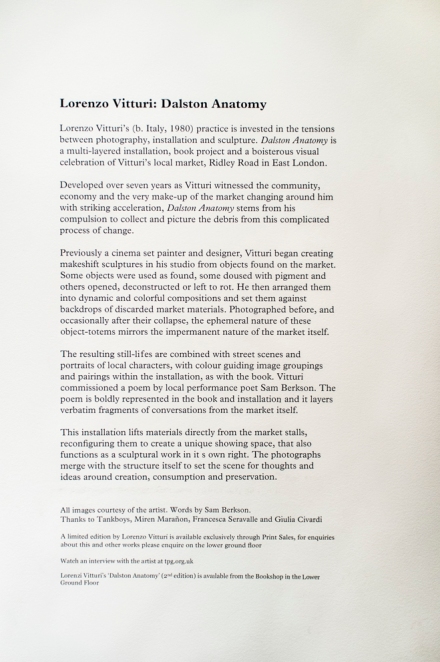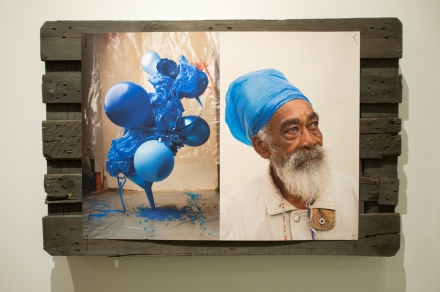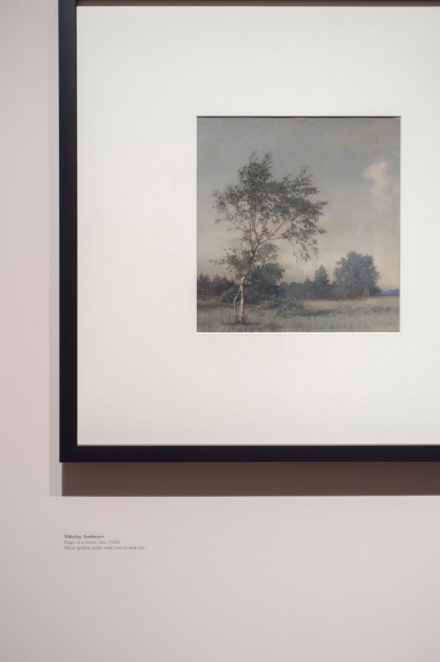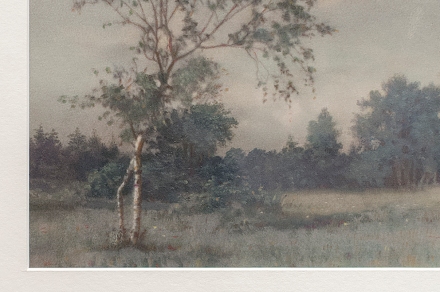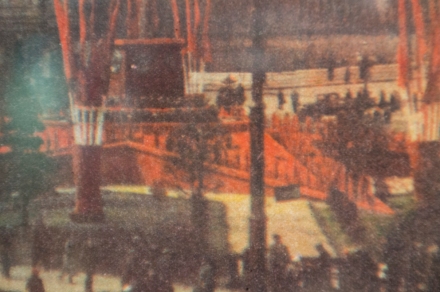‘The cry of the “Improbitas” can only be heard at New Moon and bears an extraordinary resemblance to the breathing of an asthmatic Angora cat.’ – Peter Amheisenhaufen – 1932
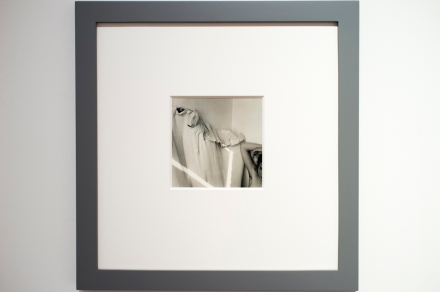
‘Untitled’ by Francesca Woodman reproduced by the kind permission of the Victoria Miro gallery, Mayfair
Four exhibitions in a day that yielded surprise and confirmation, challenge and question. I went first to see the work of Francesca Woodman at the ‘Victoria Miro’ gallery in Mayfair, to a set of images that were at once familiar (in the main) and yet strangely fresh to me, then to ‘The Photographer’s Gallery’ for two exhibitions, Lorenzo Vitturi’s ‘Dalston Anatomy’ and ‘Primrose – Early Colour Photography in Russia’ before joining the Study visit event at the Science Museum to look again at ‘Stranger Than Fiction’ by Joan Fontcuberta.
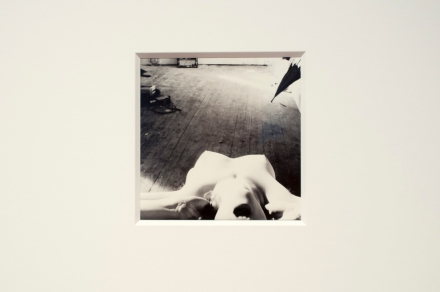
‘On being an angel’ by Francesca Woodman reproduced by the kind permission of the Victoria Miro gallery, Mayfair
Francesca Woodman is a photographer whose works I have know for many years; I wrote about her early on in my studies and in preparation for the visit to Mayfair I watched the movie “The Woodmans” again. I think I comprehend less about the artist Francesca Woodman now than I ever did before my studies started, which I suspect is a mark of how much I have developed – knowing less and wondering more. Nonetheless the twenty five or so farmed prints are reverentially displayed in prestigious surroundings. And it is to the surrounds that I want to discuss in this post; about how the various works at the four exhibitions augment the work, how I perceive the imagery because of how the curators have settled the show, and how, maybe, the work is transfigured because of it, becoming another work, perhaps the work of the curator. The mystique of Woodman and the political nous of Rodchenko and Mikhailov et al and the expansive creativity of Vitturi at TPG to the subversive narrative fictions at the Science Museum. These exhibitions exemplified the range, but not limit of the possibilities, of presentation. Submerged in the frame to bursting out of it, from single tone to radiant colour and then to applied muted colour tones. From mastered technique, to masterly technique, so many things to think about.
Woodman’s work did contain a few images that I hadn’t witnessed in other publications before, but my overall impression of this show, in respect of the curation and narrative perspective, was about how constricted so much of the work appeared to be. I’m aware that there are many groups who have either appropriated her oeuvre to their own cause or movement and that narrative will hang like a sword above any reading of the work. The prints (23 of the 25 in the gallery) were small in large (by comparison) mounts. This strategy diminished the image within the frame, it constricted it, compressed the image within the viewing distance, demanding the viewer to inspect at close range and obliterating anything else from view whilst considering the image as an individual print. Stepping back from the print to contextualize with other prints disconnected this viewer from the individual image narrative and it seemed to make sense to engage at close range. I’m not sure whether the Woodman estate requested the images to be small, I have seen many of these at greater enlargements in books – these are prints of negatives at between two and five times enlargement, maybe eight inches on a side being the largest? It presented the work as personal/intimate a conversation between two people – the artist and viewer and excluding all others for the brief moment.
Vittori’s work bursted with exuberant energy, it seemed to be escaping the frame and allowing all and sundry to engage with it, from any angle, from any perspective. This work was about Dalston market, or at least he used the market as the backdrop to his critique of the society in and around that area, and I felt the installation process that he used reflected that environment very well. It wasn’t lined up in neat rows along a gallery wall – for example like Woodman’s prints – but, seemingly, strewn across the floor in an apparently haphazard fashion; the viewer needed to be aware of the potential for pratfall as much as for engaging with the work in a non-structured gallery format.
The ‘Primrose’ work, also at TPG, regarded early Russian colour photography; I wondered about the situating titular statement denying the notion of Soviet, which then of course ‘coloured’ my ‘view’ of the exhibition. Coming straight after the top floor exhibition of Vittori these frames were very ordered, constructions of constructivists, in many instances. However I thought that many of the images were form over function and the sheer beauty of many of the images struck me. Mikhailov’s inclusion didn’t suggest an aesthetic of beauty, more of question but in and around his and Rodchenko’s work were prints of outstanding dexterity. I had never seen ‘coloured bromiols’ and some of these were multi-colour bromoils. This attention to the aesthetic by the artists detracted for me from the overall aim of the show, which is lost on this viewer, and which may have been about how the proletariat overcame the technicalities of colour reproduction for the benefit of their fellow citizens (?). And, as I’m not sure this show in respect of this post, contributes to the discussion of presentational strategies, I’ll say how wonderfully beautiful some of these images were and , to some extent, how that aesthetic detracted from what might have been intended as part of the UK/Russian year of culture…..
Fontcuberta’s exhibition I have written about here and won’t rehearse my thoughts about it again, but in respect of this post perhaps the most significant curatorial decision was the placement of it (the show) within the halls of the Science Museum. The work was designed to be in comfort with this elevated type of surrounding.
Context and narrative. All four exhibitions provided a huge variation of examples to consider. I started at the Woodman show as I had waited many years to view her work and the presentation of it didn’t help me to come closer to it, despite needing to to ‘see’ it. The work on show was wonderfully printed – helped I think by the scale of the prints – but any narrative sense escaped me. aware perhaps of the commentators continually to wrest a connection to them from her work. I think she was playing most of the time, experimenting with the form and function of photography as a means of expression, but I’m not sure, wanting as I do to mine a creative sense of visual purpose from the body of work that has been with me for many years. I’m also aware that the curation has been specific, trying to collate images that serve the curative purpose. I’m very glad I managed to see her work, but having very little contextual narrative from the artist, it will remain ‘open’ I suspect whether intended or not. I was surprised also to see references, perhaps I shouldn’t have been, but the image ‘On being an Angel’ had very strong echoes of Minkkinen’s ‘Nantucket’ image taken I think five years earlier. Interesting.
